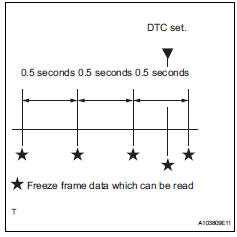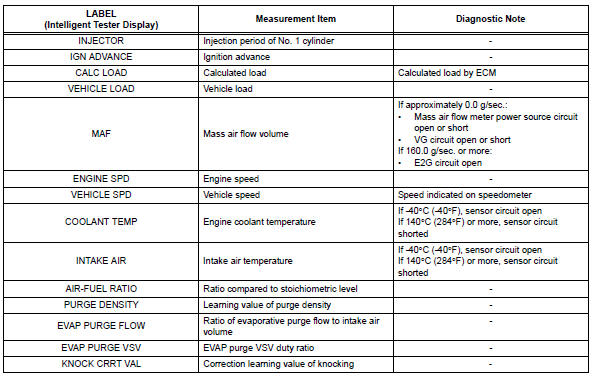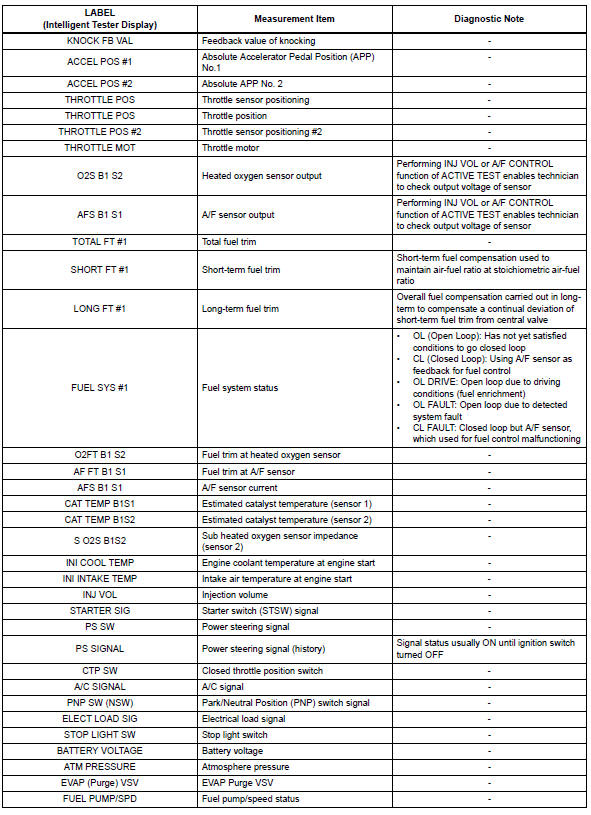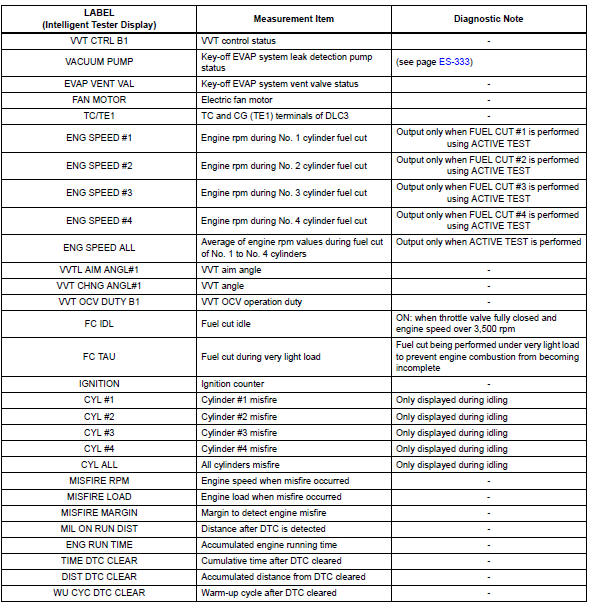Toyota RAV4 (XA40) 2013-2018 Service Manual: Freeze frame data
- Description
Freeze frame data records the engine conditions (fuel system, calculated load, engine coolant temperature, fuel trim, engine speed, vehicle speed, etc.) When a malfunction is detected. When troubleshooting, it can help determine if the vehicle was running or stopped, the engine was warmed up or not, the air-fuel ratio was lean or rich, and other data from the time the malfunction occurred.
Hint:
If it is impossible to duplicate the problem even though a dtc is detected, confirm the freeze frame data.
The ecm records engine conditions in the form of freeze frame data every 0.5 Seconds. Using the intelligent tester, 5 separate sets of freeze frame data can be checked.
- 3 Data sets before the dtc was set.
- 1 Data set when the dtc was set.
- 1 Data set after the dtc was set.
These data sets can be used to simulate the condition of the vehicle around the time of the occurrence of the malfunction. The data may assist in identifying the cause of the malfunction, and in judging whether it was temporary or not.

- List of freeze frame data



 Dtc check / clear
Dtc check / clear
Notice:
When the diagnosis system is changed from normal
mode to check mode or vice versa, all dtcs and freeze
frame data recorded in normal mode are erased. Before
changing modes, always check an ...
 Check mode procedure
Check mode procedure
Hint:
Intelligent tester only:
compared to normal mode, check mode is more sensitive to
malfunctions. Therefore, check mode can detect the
malfunctions that cannot be detected by normal mode.
Not ...
Other materials:
Installation
Replace roof carrier seal
Remove the seals.
Install new seals as shown in the illustration.
Install roof rack leg front lh
Install the leg cushion front.
Install the roof rack leg front with the 2 screws.
Torque: 2.8 To 5.0 N*m (29 to 51 kgf*cm, 25 to 44
in.*Lbf)
...
Circuit inspection
A description of the main areas of each circuit inspection
is below.
Item
Description
description
The major role, operation of the circuit and its component parts are
explained.
Dtc no., Dtc detection condition, trouble area
Indicates the diagnostic trouble cod ...
Diagnosis system
Description
The ecm controls the function of cruise control on this
vehicle. Data of the cruise control or dtc can be read
from the dlc3 of the vehicle. When trouble occurs with
cruise control, check that the cruise main indicator
does not come on but dtc inspection is performed.
Theref ...
